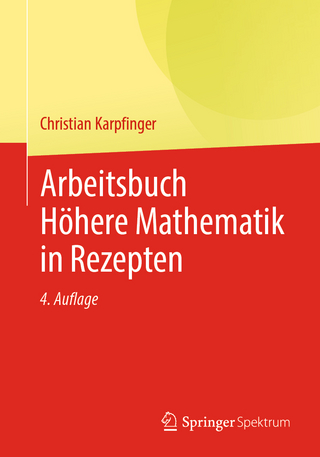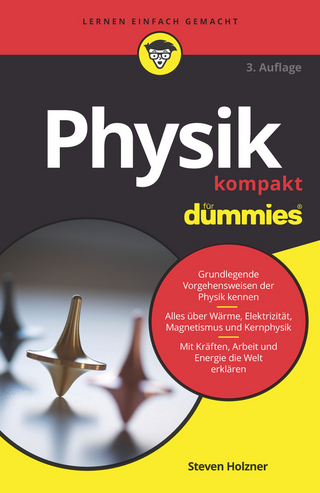
Algebra
Chapman & Hall/CRC (Verlag)
978-0-367-23176-7 (ISBN)
- Noch nicht erschienen (ca. Februar 2025)
- Versandkostenfrei innerhalb Deutschlands
- Auch auf Rechnung
- Verfügbarkeit in der Filiale vor Ort prüfen
- Artikel merken
Algebra is a subject we have become acquainted with during most of our mathematical education, often in connection with the solution of equations. Algebra: Groups, Rings, and Fields, Second Edition deals with developments related to their solutions.
The principle at the heart of abstract algebra, a subject that enables one to deduce sweeping conclusions from elementary premises, is that the process of abstraction enables us to solve a variety of such problems with economy of effort. This leads to the glorious world of mathematical discovery.
This second edition follows the original three-pronged approach: the theory of finite groups, number theory, and Galois’ amazing theory of field extensions tying solvability of equations to group theory.
As algebra has branched out in many directions, the authors strive to keep the text manageable while at the same time introducing the student to exciting new paths. In order to support this approach, the authors broadened the first edition, giving monoids a greater role, and relying more on matrices.
A course in abstract algebra, properly presented, could treat mathematics as an art as well as a science. In this exposition, we try to present underlying ideas, as well as the results they yield.
Louis Halle Rowen is a professor emeritus in the Department of Mathematics and Computer Science, Bar-Ilan University. He received his PhD from Yale University. His research specialty is noncommutative algebra, in particular division algebras as well as the structure of rings. He is an enthusiastic cellist, having soloed with the Jerusalem Symphony. Prof. Rowen is a fellow of the American Mathematics Society. He has been awarded the Landau Prize, Van Buren Mathematics Prize, and Van Amringe Mathematics Prize. Uzi Vishne is a professor in the Department of Mathematics and Computer Science, Bar-Ilan University. He holds a PhD from Bar-Ilan University. He is managing editor of the Israel Mathematics Conference Proceedings (IMC) book series. He has authored or co-authored over seventy papers.
1 Monoids and Groups
1.1 Examples of Groups and MonoidsWhen Is a Monoid a Group?
1.2 Exercises
2 Lagrange’s Theorem, Cosets, and an Application to Number Theory
2.1 Cosets
2.2 Fermat’s Little Theorem
2.3 Exercises
3 Cauchy’s Theorem: Showing that a Number Is Greater Than 1
3.1 The Exponent
3.2 The symmetric group Sn: Our Main Example
3.3 The Product of Two Subgroups
3.4 Exercises
4 Structure of Groups: Homomorphisms, Isomorphisms, and Invariants
4.1 Homomorphic Images
4.2 Exercises
5 Normal Subgroups: The Building Blocks of the Structure Theory
5.1 The Residue Group
5.2 Noether’s Isomorphism Theorems
5.3 Conjugates in Sn
5.4 The Alternating Group
5.5 Exercises
6 Classifying Groups: Cyclic Groups and Direct Products
6.1 Cyclic Groups
6.2 Generators of a Group
6.3 Direct Products
6.4 Application: Some Algebraic Cryptosystems
6.5 Exercises
7 Finite Abelian Groups
7.1 Abelian p-Groups
7.2 Proof of the Fundamental Theorem for Finite abelian Groups
7.3 The Classification of Finite abelian Groups
7.4 Exercises
8 Generators and Relations
8.1 Description of Groups of Low Order
8.3 Exercises
9 When Is a Group a Group? (Cayley’s Theorem)
9.1 The Generalized Cayley Theorem
9.2 Introduction to Group Representations
9.3 Exercises
10 Conjugacy Classes and the Class Equation
10.1 The Center of a Group
10.2 Exercises
11 Sylow Subgroups
11.1 Groups of Order Less Than 60
11.2 Finite Simple Groups
11.3 Exercises
12 Solvable Groups: What Could Be Simpler?
12.1 Commutators
12.2 Solvable Groups
12.3 Automorphisms of Groups
12.4 Exercises
13 Groups of Matrices
13.1 Exercises
14 An Introduction to Rings
14.1 Domains and Skew Fields
14.2 Left Ideals
14.3 Exercises
15 The Structure Theory of Rings
15.1 Ideals
15.2 Noether’s Isomorphism Theorems for Rings
15.3 Exercises
16 The Field of Fractions: A Study in Generalization
16.1 Intermediate Rings
16.2 Exercises
17 Polynomials and Euclidean Domains
17.1 The Ring of Polynomials
17.2 Euclidean Domains
17.3 Unique Factorization
17.4 Exercises
18 Principal Ideal Domains: Induction without Numbers
18.1 Prime Ideals
18.2 Noetherian RingsExercises
19 Roots of Polynomials
19.1 Finite Subgroups of Fields
19.2 Primitive Roots of 1
19.3 Exercises
20 Applications: Famous Results from Number Theory
20.1 A Theorem of Fermat
20.2 Addendum: “Fermat’s Last Theorem”
20.3 Exercises
21 Irreducible Polynomials
21.1 Polynomials over UFDs
21.2 Eisenstein’s Criterion
21.3 Exercises
22 Field Extensions: Creating Roots of Polynomials
22.1 Algebraic Elements
22.2 Finite Field Extensions
22.3 Exercises
23 The Geometric Problems of Antiquity
23.1 Construction by Straight Edge and Compass
23.2 Algebraic Description of Constructibility
23.3 Solution of the Geometric Problems of Antiquity
23.4 Exercises
24 Adjoining Roots to Polynomials: Splitting Fields
24.1 Splitting Fields
24.2 Separable Polynomials and Separable Extensions
24.3 Exercises
25 Finite Fields
25.1 Uniqueness
25.2 Existence
25.3 Exercises
26 The Galois Correspondence
26.1 The Galois Group of a Field Extension
26.2 The Galois Group and Intermediate Fields
26.3 Exercises
27 Applications of the Galois Correspondence
27.1 Finite Separable Field Extensions and the Normal Closure
27.2 The Galois Group of a Polynomial
27.3 Constructible n-gons
27.4 Finite Fields
27.5 The Fundamental Theorem of Algebra
27.6 Exercises
28 Solving Equations by Radicals
28.1 Radical Extensions
28.2 Solvable Galois Groups
28.3 Computing the Galois Group
28.4 Exercises
29 Integral Extensions
29.1 Exercises
30 Group Representations and their Characters
30.1 Exercises
31 Transcendental Numbers: e and π
31.1 Transcendence of e
31.2 Transcendence of π
32 Skew Field Theory
32.1 The Quaternion Algebra
32.2 Polynomials over Skew Fields
32.3 Structure Theorems for Skew Fields
32.4 Exercises
33 Where Do We Go From Here?
33.1 Modules
33.2 Matrix Algebras and their Substructures
33.3 Nonassociative Rings and Algebras
33.4 Hyperfields
33.5 Exercises
| Erscheint lt. Verlag | 10.2.2025 |
|---|---|
| Reihe/Serie | Textbooks in Mathematics |
| Sprache | englisch |
| Maße | 156 x 234 mm |
| Gewicht | 453 g |
| Themenwelt | Mathematik / Informatik ► Mathematik ► Algebra |
| ISBN-10 | 0-367-23176-X / 036723176X |
| ISBN-13 | 978-0-367-23176-7 / 9780367231767 |
| Zustand | Neuware |
| Informationen gemäß Produktsicherheitsverordnung (GPSR) | |
| Haben Sie eine Frage zum Produkt? |
aus dem Bereich


